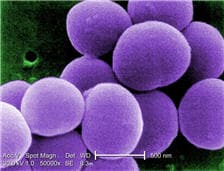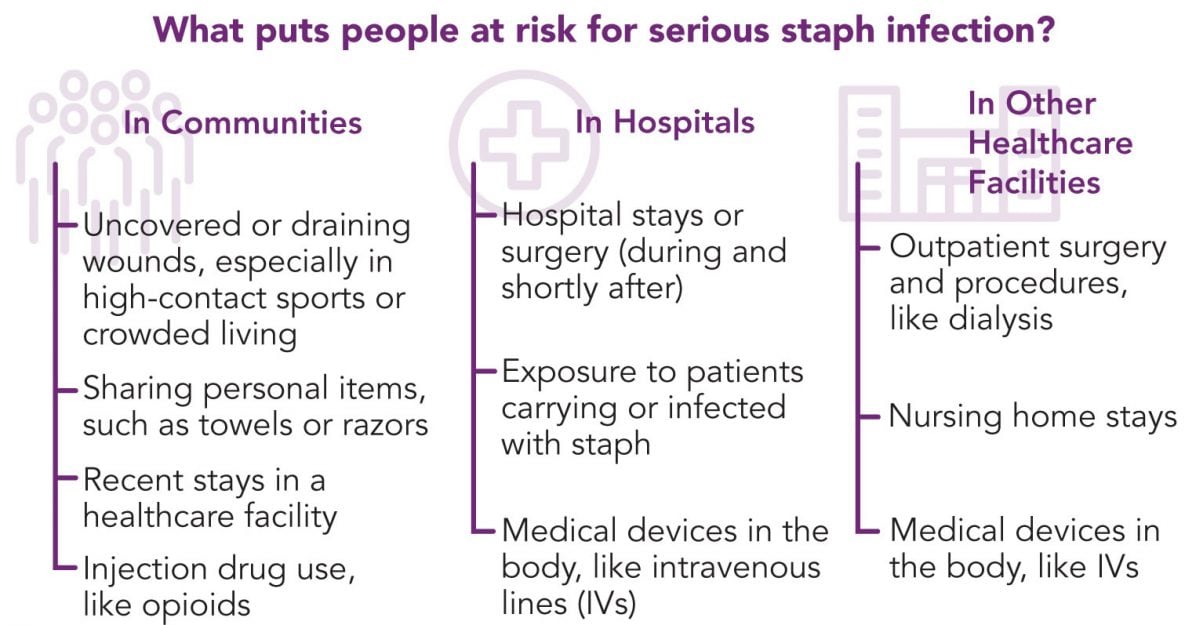Staphylococcus aureus in Healthcare Settings
General Information about Staphylococcus aureus

Staphylococcus aureus
Staphylococcus aureus [staf I lō-kok is aw ree us] (staph), is a type of germ that about 30% of people carry in their noses. Most of the time, staph does not cause any harm; however, sometimes staph causes infections. In healthcare settings, these staph infections can be serious or fatal, including:
- Bacteremia or sepsis when bacteria spread to the bloodstream.
- Pneumonia, which most often affects people with underlying lung disease including those on mechanical ventilators.
- Endocarditis (infection of the heart valves), which can lead to heart failure or stroke.
- Osteomyelitis (bone infection), which can be caused by staph bacteria traveling in the bloodstream or put there by direct contact such as following trauma (puncture wound of foot or intravenous (IV) drug abuse).
Staph infections are caused by several different types of staph germs, including:
- methicillin-resistant Staphylococcus aureus (MRSA)
- methicillin-susceptible Staphylococcus aureus (MSSA)
- vancomycin-intermediate Staphylococcus aureus (VISA)
- vancomycin-resistant Staphylococcus aureus (VRSA)
Although MRSA is often better known, any staph infection can be dangerous even if it is not resistant to antibiotics.
Populations at risk for Staphylococcus aureus infection
Anyone can develop a staph infection, although certain groups of people are at greater risk, including people with chronic conditions such as diabetes, cancer, vascular disease, eczema, lung disease, and people who inject drugs. In healthcare facilities, the risk of more serious staph infection is higher because many patients have weakened immune systems or have undergone procedures. In healthcare, the risk of more serious staph infection is higher for patients in intensive care units (ICUs), patients who have undergone certain types of surgeries and patients with medical devices inserted in their bodies.
